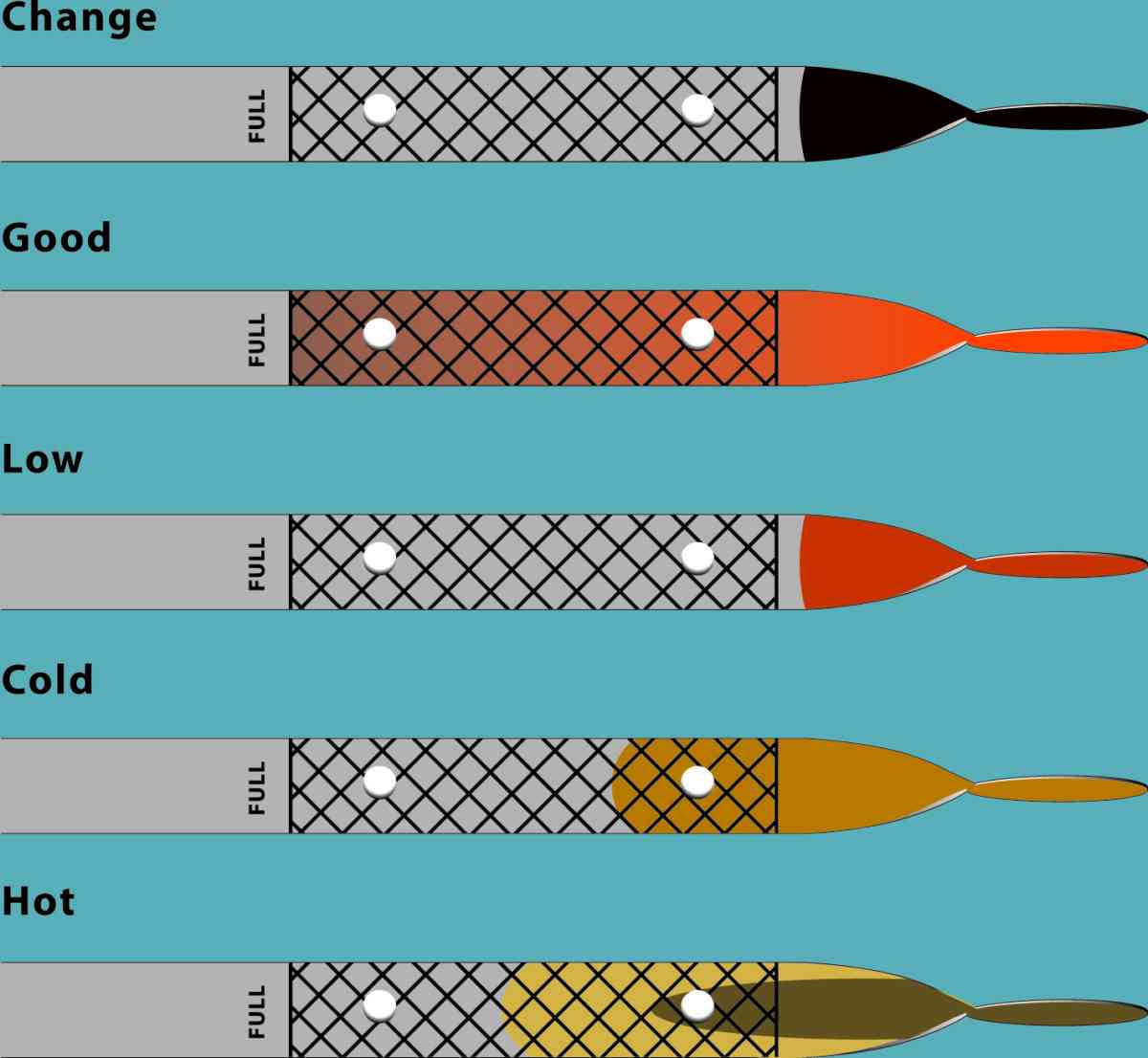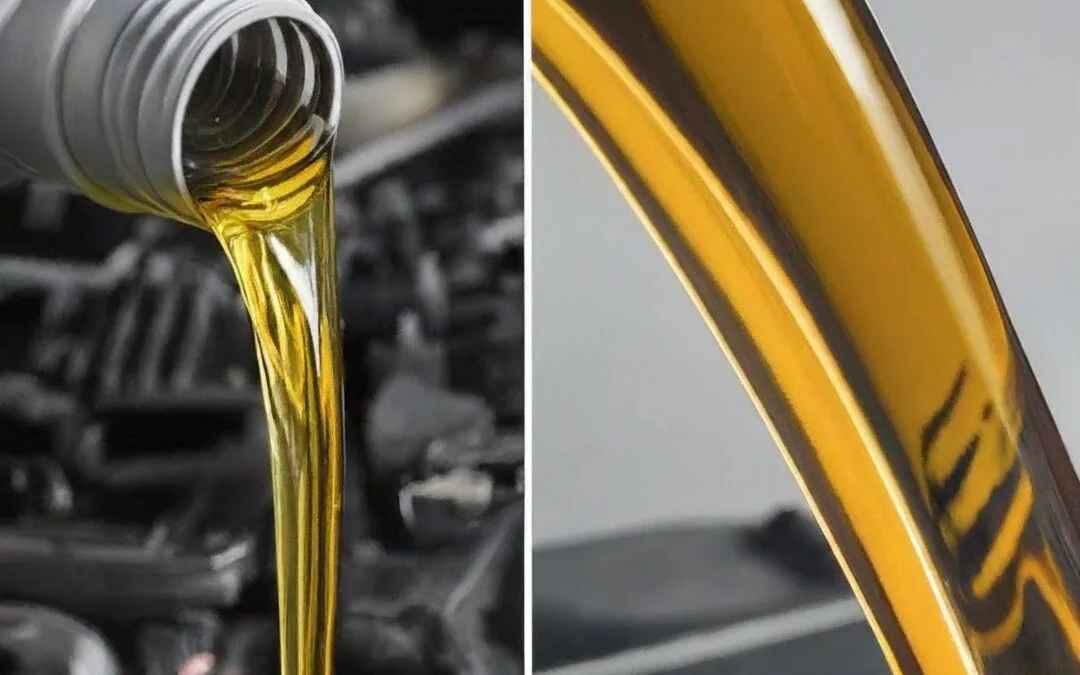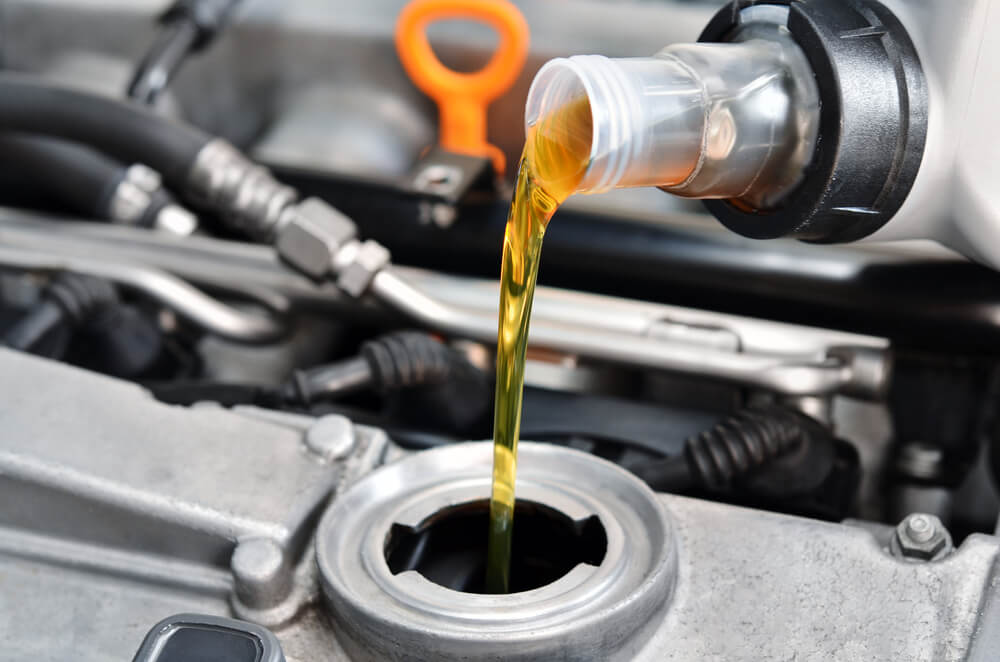Title: How to Read and Understand motor oil?:“Deciphering the Secrets of Motor Oil“
Introduction:
In this blog, we embark on a journey to demystify the language of motor oil. From viscosity ratings to API service categories, we will guide you through the essential elements that help you read and understand motor oil. By the end of this guide, you’ll be equipped with the knowledge to make informed choices when it comes to your engine’s well-being. So, let’s dive in and uncover the valuable insights that motor oil holds.
Viscosity Ratings: Decoding the Flow of Motor Oil
Viscosity ratings are among the most critical aspects of understanding motor oil. Viscosity refers to the oil’s resistance to flow and is a key indicator of how well it performs in various temperature conditions. Deciphering viscosity ratings is essential for selecting the right motor oil for your vehicle. Let’s explore this vital aspect of motor oil and how it affects engine performance.
The Basics of Viscosity: Viscosity is often described using the Society of Automotive Engineers (SAE) scale. The SAE scale assigns a numerical code to motor oil that represents its viscosity. For example, you might see labels like SAE 10W-30 or SAE 5W-20 on motor oil containers.
Understanding the SAE Rating: The SAE rating consists of two numbers separated by a ‘W,’ which stands for “winter.” The first number (before the ‘W’) indicates the oil’s viscosity in cold temperatures, while the second number represents its viscosity at higher temperatures. A lower first number indicates thinner, more fluid oil at low temperatures, while a lower second number suggests less viscosity at high temperatures.
- Low-Temperature Viscosity: The first number in the SAE rating, often referred to as the “winter weight,” measures the oil’s flow characteristics in colder temperatures. A lower number, such as 0W or 5W, indicates that the oil flows more easily in cold weather, which is crucial for proper engine lubrication during start-up.
- High-Temperature Viscosity: The second number signifies the oil’s viscosity at higher temperatures. A lower second number, such as 20 or 30, means that the oil is thinner and offers less resistance to flow when the engine is hot. This is essential for engine protection during high-temperature operation.
Choosing the Right Viscosity: Selecting the appropriate viscosity rating for your vehicle is critical. It should align with your engine’s requirements, as specified by the manufacturer. Choosing the wrong viscosity can result in inadequate lubrication, potentially leading to engine damage.
- Follow Manufacturer Recommendations: Always consult your vehicle’s owner’s manual for the manufacturer’s recommended motor oil viscosity. This is the best way to ensure that the oil will perform optimally in your engine.
- Consider Climate and Usage: Factors such as the climate in your region and your driving habits should also influence your choice. If you live in a colder climate, opt for a lower first number (e.g., 5W). For warmer climates or extensive highway driving, a higher second number (e.g., 30) may be suitable.
API Service Categories: Navigating the Road to Engine Health
When it comes to choosing the right motor oil for your vehicle, the API (American Petroleum Institute) service categories play a crucial role in ensuring your engine’s health and performance. These categories provide valuable information about the quality and suitability of motor oils for specific engines. Understanding the API service categories is essential for selecting the best motor oil to protect your engine. Let’s delve into this important aspect of motor oil selection.
The Significance of API Service Categories: API service categories are a system of classifying motor oils based on their performance and quality. These categories are established by the API to help consumers and mechanics choose motor oils that meet the specific needs of different engines. The categories also evolve over time to keep up with advancements in automotive technology.
How to Read API Symbols: API service categories are often indicated by a donut-shaped symbol on motor oil containers. This symbol displays two pieces of critical information:
- Service Symbol: This symbol is located in the center of the donut and represents the oil’s intended service category, such as “SN” for gasoline engines.
- Donut Border: The border of the donut contains additional information about the oil’s performance, including fuel efficiency and other specific attributes.
Common API Service Categories:
- S Series: These categories are for gasoline engines and include designations like SN, SM, SL, and SJ. “SN” represents the latest and highest standard, indicating superior protection for modern engines.
- C Series: These categories are for diesel engines and include designations such as CK-4 and CJ-4. These oils are designed to meet the demands of diesel engines, providing excellent protection and performance.
Choosing the Right API Category: Selecting the correct API service category depends on the type of engine and the manufacturer’s recommendations. To choose the right motor oil:
- Consult Your Vehicle’s Manual: Your vehicle’s owner’s manual will specify the recommended API service category for your engine.
- Consider Your Engine Type: Ensure that you choose the category suitable for your engine type, whether it’s gasoline or diesel.
- Stay Updated: Keep up with the latest API service categories, as newer categories may offer improved performance and protection for your engine.
Using the correct API service category ensures that your motor oil provides the right level of protection and performance for your engine, contributing to its longevity and reliability. Stay informed, consult your vehicle’s manual, and make the right choice to keep your engine running smoothly on the road ahead.
Understanding Motor Oil Labels: Deciphering the Essential Information
Motor oil labels contain a wealth of information that can help you make informed choices for your vehicle’s engine. Properly interpreting these labels is crucial for ensuring that you select the right motor oil to keep your engine running smoothly and efficiently. Here, we’ll break down the key elements found on motor oil labels and guide you on how to use this information to your advantage.
1. Brand and Product Name:
- The brand and product name provide you with basic information about the manufacturer and the specific type of motor oil.
2. Viscosity Rating:
- The viscosity rating, often presented as something like “SAE 5W-30,” indicates how the oil flows in different temperature conditions. It’s crucial to match the viscosity rating with your engine’s requirements and climate conditions.
3. API Service Category:
- Look for the API service category symbol, such as “SN” for gasoline engines or “CK-4” for diesel engines. This indicates the oil’s suitability for different types of engines.
4. Certification Seals:
- Some labels may display additional certification seals, such as the “Starburst” from the API or other industry standards, signifying that the oil meets certain performance and quality criteria.
5. Quality and Performance Attributes:
- The donut border of the API symbol often contains information about the oil’s performance, such as fuel efficiency or other specific attributes.
6. Weight or Volume:
- The label specifies the weight or volume of motor oil in the container, helping you determine how much you need for an oil change.
7. Manufacturer’s Recommendations:
- The label may include information on which vehicles or engines the oil is suitable for, based on the manufacturer’s recommendations.
How to Use Motor Oil Labels:
- Consult Your Owner’s Manual: Start by checking your vehicle’s owner’s manual for the manufacturer’s recommended motor oil specifications. This information is your best guide for selecting the right oil.
- Match the Viscosity: Ensure that the viscosity rating on the label matches the requirements of your engine and the climate conditions in your area.
- Consider the API Service Category: Choose the API service category that aligns with your engine type (gasoline or diesel) and the latest standard for optimal protection.
- Inspect Certification Seals: Look for additional certification seals to verify that the oil meets industry standards for quality and performance.
- Assess Performance Attributes: If there are specific performance attributes mentioned on the label, consider whether they align with your needs, such as fuel efficiency.
- Check Manufacturer’s Recommendations: Pay attention to any guidance regarding the vehicles or engines for which the oil is suitable, based on the manufacturer’s recommendations.
Reading the Motor Oil Dipstick: A Window to Your Engine’s Health
The motor oil dipstick is a simple yet invaluable tool that offers a direct glimpse into your engine’s well-being. By learning how to read the dipstick correctly, you can monitor your engine’s oil level and assess the oil’s condition. This regular practice is essential for maintaining your engine’s health and performance. Let’s explore how to correctly use and read the motor oil dipstick.
Locating the Dipstick: The motor oil dipstick is a slender, often yellow-handled rod located in the engine compartment. Its placement may vary depending on the vehicle’s make and model, but it is typically found near the engine block and easily accessible.
The Right Procedure:
- Prepare the Vehicle: Ensure that your vehicle is parked on a level surface, and the engine has cooled down. This allows the oil to settle back into the oil pan, providing a more accurate reading.
- Pull the Dipstick: Start the engine and let it run for a minute or two to circulate the oil. Then, turn off the engine and wait for a few more minutes. This ensures the oil has settled back into the oil pan. Now, locate the dipstick and pull it out.
- Wipe It Clean: After pulling out the dipstick, use a clean rag or paper towel to wipe it completely clean. This step is crucial to ensure an accurate reading, as any old oil or debris on the dipstick can lead to misinterpretation.
- Reinsert the Dipstick: Fully insert the dipstick back into its tube until it’s seated securely.
- Pull It Out Again: Now, pull the dipstick out once more. This time, you will examine the oil level and condition.
Interpreting the Oil Level: On the dipstick, you’ll typically find two marks – a low-level mark and a high-level mark. The oil level should fall between these two marks. If it’s below the low mark, you need to add oil. If it’s near or above the high mark, you have sufficient oil.
Assessing Oil Condition: In addition to checking the oil level, you can also assess the oil’s condition. Healthy oil should be clear, amber, or light brown. If it appears dark, thick, or has a burnt odor, it may be time for an oil change.
The Importance of Regular Checks: Regularly checking your motor oil using the dipstick is a proactive way to monitor your engine’s health. It allows you to detect potential issues, such as oil leaks or excessive oil consumption, before they become severe.
Interpreting Oil Color and Consistency: What Your Motor Oil Reveals
By understanding what the oil’s appearance signifies, you can stay proactive about engine maintenance and prevent potential issues down the road. Let’s dive into the art of interpreting oil color and consistency.
1. Oil Color:
Amber or Light Brown: This is the color of healthy, clean motor oil. It suggests that the oil is doing its job of lubricating engine components effectively and hasn’t picked up many contaminants.
Dark Brown or Black: As motor oil circulates through your engine, it naturally accumulates dirt and particles over time. A darker color is normal, but if the oil is very dark or nearly black, it may be time for an oil change.
Thick and Gooey: If the oil is exceptionally thick or has a gooey consistency, it could indicate that the oil has broken down, possibly due to overheating or prolonged use without an oil change. This can reduce its lubrication capabilities.
Foamy or Bubbly: If you notice a foamy consistency on the dipstick, it might suggest the presence of coolant or water in the oil, possibly due to a gasket or internal engine issue. This should be addressed promptly.
2. Oil Consistency:
Thin and Watery: Extremely thin, watery oil might indicate an issue with the oil’s viscosity, potentially due to fuel contamination or a coolant leak into the oil. It’s essential to investigate the cause and remedy it.
Thick and Sludgy: If the oil appears thick and sludgy, it may signify that the oil has deteriorated significantly and is no longer performing its lubricating functions effectively. This can lead to engine damage and should be addressed immediately.
Muddy or Milky: A milky appearance often indicates the presence of coolant or water mixing with the oil. This can result from a blown head gasket or other internal engine issues and requires immediate attention to prevent further damage.
Granular or Gritty: The presence of granular or gritty particles in the oil may suggest internal engine wear and the need for a closer inspection to identify and address the root cause.
Understanding the color and consistency of your motor oil empowers you to make informed decisions about engine maintenance. Regularly checking your oil for any unusual appearances can help you detect potential issues early, enabling timely maintenance or repairs to keep your engine running smoothly. Remember that oil color and consistency can vary depending on factors like the type of oil used and your driving habits, so it’s essential to consider these factors when interpreting what you see on the dipstick.
Recognizing Signs of Motor Oil Contamination: A Guide to Engine Health
Unusual, burnt, or Motor oil plays a crucial role in ensuring the smooth and efficient operation of your vehicle’s engine. However, contaminants can compromise its performance, potentially leading to engine damage if left unaddressed. Recognizing the signs of motor oil contamination is essential for preserving your engine’s health and longevity. Let’s explore common indicators of oil contamination and what they mean for your vehicle.
1. Unusual Odorsfoul odors from the engine compartment or exhaust may signal oil contamination. A distinct burnt oil smell can result from overheating or oil leaks, while a sweet odor might indicate coolant mixing with the oil.
2. Exhaust Smoke:
- Different colors of exhaust smoke can hint at contamination issues:
- Blue Smoke: This often suggests that oil is burning within the combustion chamber, which could result from worn piston rings, valve seals, or other internal engine problems.
- White Smoke: White exhaust smoke can be a sign of coolant entering the combustion chamber, often due to a blown head gasket or a cracked engine block.
3. Oil Discoloration:
- Contaminated motor oil may appear darker, thicker, or off-color compared to its usual amber or light brown hue. Dark, black, or sludgy oil can signal contamination by dirt, debris, or other particles.
4. Frothy Oil on Dipstick:
- A frothy or milky appearance on the dipstick suggests the presence of water or coolant in the oil. This could be due to a blown head gasket or other internal engine issues.
5. Reduced Oil Pressure:
- Contaminants can obstruct oil passages and reduce oil pressure, affecting engine lubrication. A sudden drop in oil pressure may indicate a problem requiring immediate attention.
6. Engine Knocking or Unusual Noises:
- When contaminants disrupt the oil’s lubrication properties, it can lead to increased friction and metal-on-metal contact in the engine. This can result in knocking or unusual noises from the engine.
7. Overheating:
- Contaminated oil may not effectively dissipate heat, potentially causing the engine to overheat. Persistent overheating can lead to engine damage.
8. Increased Fuel Consumption:
- Oil contamination can negatively impact engine efficiency, leading to increased fuel consumption.
9. Warning Lights:
- Modern vehicles are equipped with warning lights, such as the oil pressure or check engine light, that may illuminate if the engine detects issues related to oil contamination.
10. Reduced Engine Performance: – Contaminated oil can hinder engine performance, leading to reduced power, acceleration, and overall responsiveness.
Conclusion:
Understanding how to read motor oil is an essential skill for every vehicle owner. By mastering the art of interpreting viscosity ratings, API service categories, and other vital information on motor oil labels, you can make informed decisions that contribute to your engine’s health and longevity. Regularly checking your motor oil’s level and condition using the dipstick allows you to stay proactive in maintaining your vehicle. With these skills in hand, you can enjoy the peace of mind that comes with a well-cared-for engine and the confidence to keep it running at its best.
Useful link:
https://www.scfuels.com/what-does-the-color-of-your-oil-mean/
FAQs: How to Read Motor Oil
1. Why is it essential to read and understand motor oil?
- Understanding motor oil is crucial for maintaining your vehicle’s engine. It helps you choose the right oil for your engine type, ensuring proper lubrication, performance, and longevity.
2. What do the numbers on motor oil labels mean?
- The numbers on motor oil labels, such as “10W-30,” represent the oil’s viscosity. The first number (before the ‘W’) indicates low-temperature viscosity, while the second number represents high-temperature viscosity.
3. How can I determine the right motor oil for my vehicle?
- Check your vehicle’s owner’s manual for the manufacturer’s recommended oil specifications. It typically includes the recommended viscosity and API service category.
4. What are API service categories, and why are they important?
- API service categories are classifications indicating the quality and performance of motor oils. They help you choose oil that aligns with your engine type and its specific requirements, ensuring proper protection.
5. How often should I check my motor oil using the dipstick?
- It’s advisable to check your motor oil regularly, ideally every few weeks or before long journeys. Additionally, check it after an oil change to ensure the correct oil level.
6. What does it mean if my motor oil is very dark or nearly black?
- Dark or nearly black motor oil suggests that it has collected dirt and contaminants. While some darkening is normal, excessively dark oil may indicate the need for an oil change.
7. What should I do if I notice unusual odors coming from the engine or exhaust?
- Unusual odors, such as burnt oil or sweet coolant smells, may suggest contamination. Investigate the issue promptly to prevent potential engine damage.
8. Is it safe to drive with low motor oil levels?
- It’s not safe to drive with low motor oil levels. Low oil can lead to inadequate lubrication and engine damage. Always maintain the oil level within the recommended range.
9. Can I mix different brands or types of motor oil?
- While it’s generally best to stick with one type and brand of motor oil, in some cases, mixing different oils may be acceptable. However, it’s crucial to ensure that they are compatible and meet your engine’s requirements.





Leave a Reply